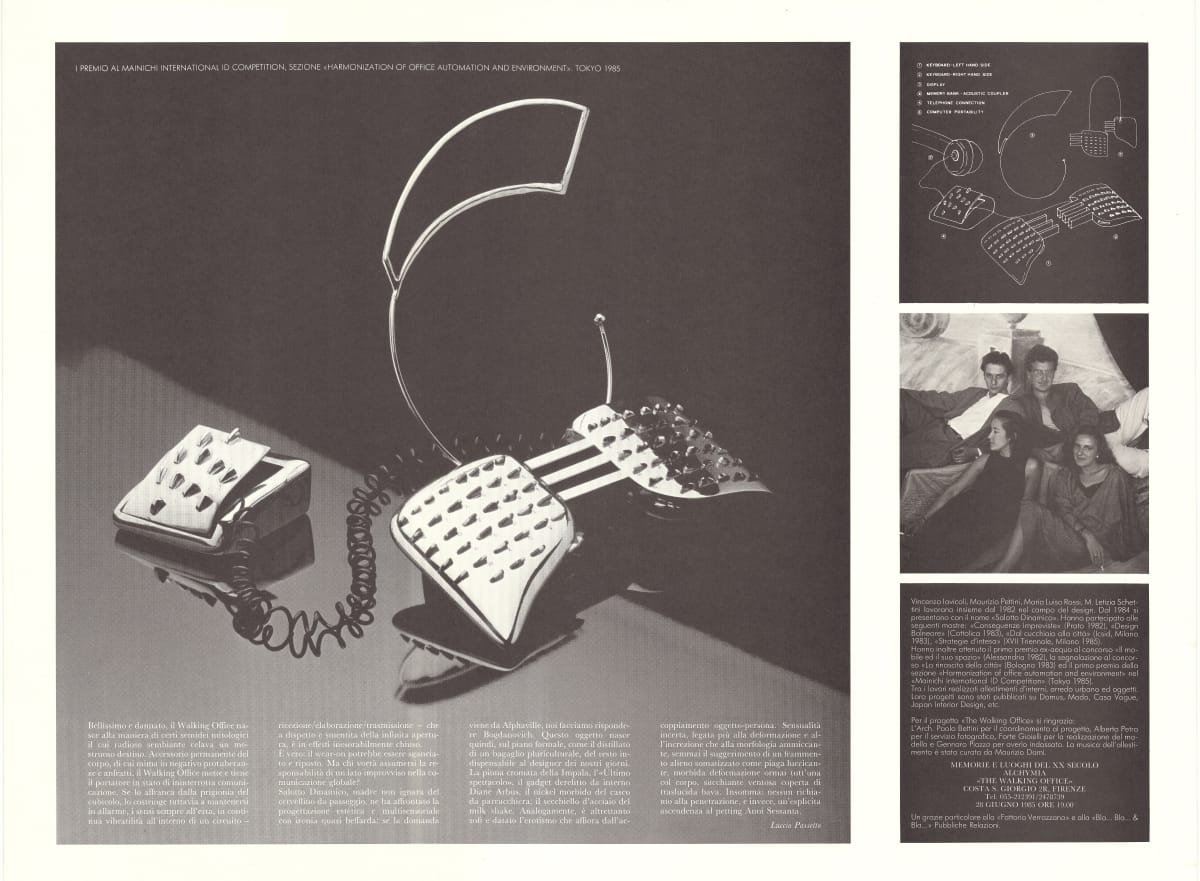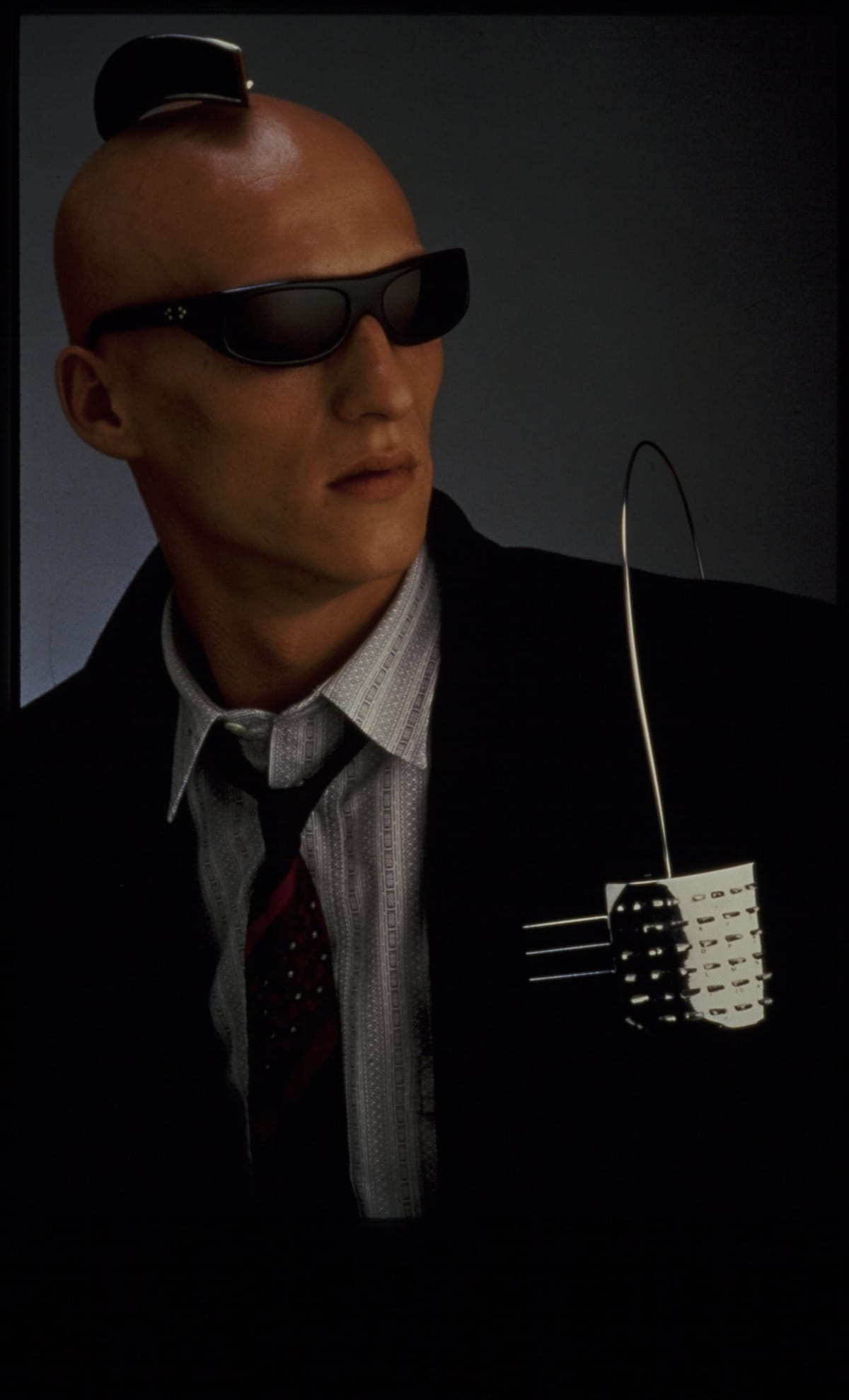Paving the Way for Hands-Free Technologies
In 1972, Lillian Schwartz sat down with a bundle of pipe cleaners. She tested their flexibility, twisting them into loose loops and serpentine figures. Lillian was an artist and often used unconventional materials in her work, but these pipe cleaners weren't for arts and crafts. In front of her sat her colleague Max Mathews, who also worked at Bell Laboratories, a technology research facility in Murray Hill, New Jersey. Like Lillian, Max used the extensive computer equipment at the labs for creative endeavors, but he made music instead of art. Today, they were doing something different.
Lillian wrapped the pipe cleaners around Max's shoulders, experimenting with different positions — under his armpits, behind his neck — until she found a configuration that worked. The pipe cleaners sat over his right shoulder, arching from back to front, the front end spiraling up toward his mouth. Lillian would use this pattern to design a prototype hands-free telephone.
Max, like many people, easily tired of sitting in one place and holding a telephone receiver when taking calls. In the days before mobile phones, he couldn't even stand to walk around and burn off steam. Now, Max could easily take notes or pace across his office. Lillian's design not only responded to questions of ease and convenience, it anticipated hands-free technologies we're still experimenting with today.

“Sculptural Hands-Free Telephone” by Lillian F. Schwartz, 1972. / THF188460
Lillian's hands-free telephone was practical, but it was also elegant. The streamlined curves and metallic shine reflected the new technologies she worked with as a computer artist, but they also reflected trends in design at large. The space age aesthetic was characterized by streamlined, often organic shapes that appeared futuristic, inspired by emerging "high technologies" and the visual style of science fiction entertainment.
The space age aesthetic was also manifest in the fashion industry. With bold colors, blocky patterns and vinyl fabrics, people could embody their ideal of a sleek technological future. This future included the cyborg — a being made from both organic and mechanical parts. In other words, people could "become" cyborgs by wearing technology as an accessory.
The Walking Office was created in 1984 by Italian design students Vincenzo Iavicoli and Maria Luisa Rossi, who went on to form the design group Salotto Dinamico. The concept was simple and sounded right at home in a science fiction novel: People could wear their office computer as a compact accessory. After a day's work, they could transmit the data stored in their Walking Office through any available telephone line, effectively uploading their work and their activities.

Walking Office Wearable Computer advertising poster, 1985. / THF291245
Photographs of a model wearing the Walking Office demonstrate how versatile it was as a form of individual expression. The mohawk-like antenna could be worn around the neck or over the head; the computer itself could be worn over the shoulder, slung casually across the back or on a belt clip.

Model wearing Walking Office Wearable Computer prototype, circa 1984. / THF274747
People continue to find new and creative ways to access mobile and hands-free technologies. Speech commands have become a popular alternative to manual control, with the development of systems like Amazon’s Alexa and the Google Home and Assistant bringing greater ease and convenience to household tasks. While people may not always be using their hands, they continue interacting with the technology that has become more and more integral to daily life.
CJ Martonchik created this content during their 2023 Simmons Graduate Internship at The Henry Ford.

